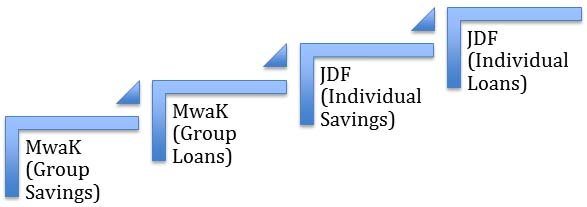At Nuru International, we follow the Design Thinking school of thought and are dedicated to innovation, iteration and the openness to question our model. But it’s hard. It means a constant vigilance over your desired impact and continually reevaluating what you are doing in order to ensure you are meeting your goals in the best way possible. Sometimes it means looking for ways to improve efficiency and other times it has more to do with market strategy and selling points to the community. But either way it is a balancing act between being willing to scrap everything and trying not to “throw out the baby with the bath water.”
This season, I’ve learned that innovation can simply translate down to simplification. My staff and I have been discussing the CED model and how we might improve it. We discussed our goal and made sure that we not only understood what our goal was, but why it was important. Then we reevaluated how we were meeting our goal in light of the specific whys. It revealed that with the launch of the MwaK Loan Program, we would have some redundancy in our program. The MwaK Loan Program better met our goals and helped us to reach our target market, not just a general audience. In light of that, we slimmed down our model and made it into a tighter, scalable and hopefully more sustainable model.
 Now we have only two programs, MwaK and JDF, rather than the four we previously had. The first has both a savings and loan component, but it is group based in order to bolster accountability during the training stages. Then, our JDF program also has a savings and loan component, but focused more on preparing and ensuring the client is stable enough and practicing the money management skills taught in order to move onto larger financial institutions. It’s simple, but effective. The meeting schedule is scaled back so we don’t overwhelm farmers. The savings is flexible to accommodate the inconsistent income of those in poverty. And the loan tiers are highly structured, in order to provide support and training on money management, instead of holding expectations that more money will automatically be a solution.
Now we have only two programs, MwaK and JDF, rather than the four we previously had. The first has both a savings and loan component, but it is group based in order to bolster accountability during the training stages. Then, our JDF program also has a savings and loan component, but focused more on preparing and ensuring the client is stable enough and practicing the money management skills taught in order to move onto larger financial institutions. It’s simple, but effective. The meeting schedule is scaled back so we don’t overwhelm farmers. The savings is flexible to accommodate the inconsistent income of those in poverty. And the loan tiers are highly structured, in order to provide support and training on money management, instead of holding expectations that more money will automatically be a solution.
Innovation can bring a lot of positive change and creative solutions, but sometimes the best solution isn’t about adding onto something, but rather scaling back and going with simplicity.

